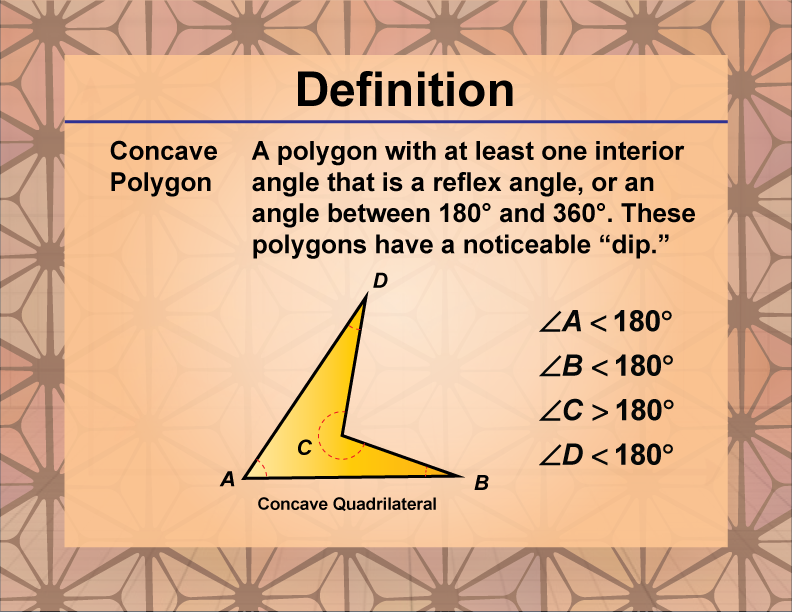
Display Title
Definition--Polygon Concepts--Concave Polygon
Display Title
Concave Polygon

Topic
Polygons
Definition
A concave polygon is a type of polygon where at least one interior angle is greater than 180 degrees.
Description
In geometry, a concave polygon is significant due to its unique properties and the implications these have on calculations involving the shape. Unlike convex polygons, which have all interior angles less than 180 degrees, concave polygons have at least one angle that "caves in" or is greater than 180 degrees. This results in some of the diagonals of the polygon lying outside its boundary. Concave polygons are always irregular, meaning their sides and angles are not all equal. This irregularity can complicate the process of calculating their area and perimeter.
Typically, to find the area of a concave polygon, one must divide it into simpler shapes like triangles or parallelograms, whose areas can be more easily calculated. The perimeter, on the other hand, is the sum of the lengths of all its sides. These polygons are relevant in various fields, including computer graphics, where understanding the shape and properties of polygons is crucial for rendering images. Additionally, in architectural design and other engineering disciplines, recognizing and working with concave polygons can be essential for structural analysis and design.
For a complete collection of terms related to polygons click on this link: Polygons Collection.
| Common Core Standards | CCSS.MATH.CONTENT.5.G.B.3, CCSS.MATH.CONTENT.5.G.B.4, CCSS.MATH.CONTENT.3.G.A.1, CCSS.MATH.CONTENT.3.MD.D.8, CCSS.MATH.CONTENT.6.G.A.1, CCSS.MATH.CONTENT.6.G.A.3, CCSS.MATH.CONTENT.HSG.CO.A.3 |
|---|---|
| Grade Range | 3 - 8 |
| Curriculum Nodes |
Geometry • Polygons • Definition of a Polygon |
| Copyright Year | 2021 |
| Keywords | polygon, definitions, glossary term |